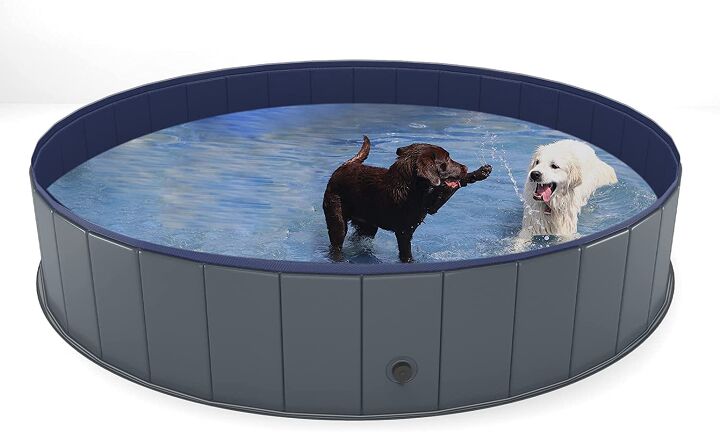Can You Teach a Dog to Swim?

Most dogs absolutely love water, whether it's splashing in puddles, playing at the beach, or jumping into lakes and rivers. Let’s face it, your pooch would not hesitate to take a big splash, wherever they are, if given a chance! However, while some dogs take to water naturally, others may need a little help and guidance to become confident swimmers. Believe it or not, not all dogs are born knowing how to swim. While some dog breeds, such as Labradors and Retrievers, are known for their swimming abilities, others may be less inclined to take a dip.
However, with patience, positive reinforcement, and proper training, most dogs can learn to enjoy swimming and be safe in the water. Before you attempt to teach your dog how to swim, though, you need to know how to safely and efficiently introduce them to water.
Teaching Your Dog to Swim: Step By Step
If you notice that your dog isn’t a natural swimmer and that they avoid larger bodies of water altogether, it is most likely that they don’t have a particularly developed sense of swimming. That sense, however, can be “awakened”, with just a little bit of practice and teaching. For these purposes, it is best that you conduct the training in a small pet pool, in your backyard. That way, you will have complete control over their safety. This Niubya foldable pool for pets is a good choice as it has an anti-slip bottom so your dog won’t slip around, and it’s made from sturdy PVC that can’t be easily punctured by their nails. Once you have your pool set up, you can begin the introduction.
- First of all, you should start in shallow water. When your dog has the ability to touch the ground and stand firm, they will have a lot more confidence to begin the training in earnest. Of course, make sure the water is clean and free from any hazards.
- Take it slow and gradually introduce them into deeper water. As your pet becomes more relaxed in a pool, start increasing the level of water, until eventually they can stand firmly. This is the first step towards actual swimming.
- Use a flotation device. For dogs that are initially hesitant or unsure about swimming, consider using a flotation device designed for dogs. These can provide an extra sense of security and help your dog stay buoyant while they get used to the water. This Doglay high buoyancy vest will suit most dogs, from small to large breeds and it comes in a variety of bright patterns and colors so pets are easy to spot in the water when you actually take them out to a lake or the ocean.
- Be sure to assist them as they learn. Once you move to deeper waters, gently guide them while supporting their body under their belly or using a harness designed for swimming. Help them practice the paddling motion by moving their legs in a swimming motion. Gradually release your support as they become more confident and start swimming on their own.
How to Motivate Your Dog to Start Swimming?
Not all pooches are enthusiastic about starting new “projects”, especially not those involving water and physical exertion. In such cases, the right motivation might be the key to success. So, whether your dog is hesitant, fearful, or simply unsure about the water, there are several ways you can help motivate them to take the plunge.
Naturally, the first thing you can do is utilize positive reinforcement methods. Reward your dog with praise and treats for any small steps they take towards swimming. This could be dipping their paws in the water, standing in shallow water, or taking a few steps forward. Positive reinforcement will help build their confidence and ensure they associate swimming with positive experiences.
Don’t make the process strenuous and demanding. This should be a fun activity for your dog, so adopt that attitude from the get-go. Incorporate toys, games, and play in order to make it a positive and rewarding activity. However, remember that not all dogs are natural swimmers, and some may never develop a strong affinity for water. Respect your dog's comfort level and never force them into the water if they seem fearful or resistant after everything you’ve tried.
Don’t Forget To Make Safety The Number One Priority
Water is often unpredictable. If you practice swimming lessons in a large pond, lake, river, or sea, make sure you always prioritize safety. Supervise them closely during the learning process, especially in open water. Always use a lifejacket for dogs for added safety, particularly for dogs with short legs or low buoyancy.
Remember, not all dogs are natural swimmers, and some may never develop a strong inclination for swimming. It's important to respect your dog's comfort level and never force them into the water. Be patient, consistent, and always prioritize their safety and well-being.

A proud mama to seven dogs and ten cats, Angela spends her days writing for her fellow pet parents and pampering her furballs, all of whom are rescues. When she's not gushing over her adorable cats or playing with her dogs, she can be found curled up with a good fantasy book.
More by Angela Vuckovic

























